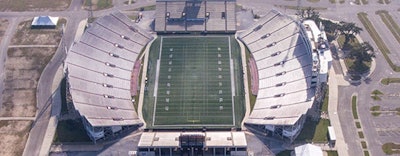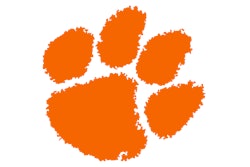
It was Jan. 13 when the first cases of COVID-19 were reported outside the People's Republic of China. On Jan. 21, the first case was reported in the United States. By early March, the first American cities were beginning to ban mass gatherings, which led to the cancellation of the NCAA men's and women's basketball tournaments. As of this writing, the U.S. has seen in excess of 150,000 deaths and politicization of the virus has complicated efforts to stop its spread.
The National Center for Spectator Sports Safety and Security at The University of Southern Mississippi is trying to alleviate some of the confusion and frustration for operators of sport and entertainment venues with a new set of guidelines that tap into the expertise of professionals from a range of industry segments.
Drew Pittman, associate athletic director of event management and facilities at Baylor University, was part of a 28-person taskforce that compiled NCS4's "COVID-19 Considerations for Sport and Entertainment Venues and Events" document. While not labeled as a best-practices document — Pittman says those can take years to create and validate — this most recent publication offers a wealth of information for venue and event professionals on how best to safely open and operate amid a global health crisis. NCS4 says the document is intended to "help inform decision-makers as they develop strategies to reopen their businesses, build resilience and continuity plans, and continue operations during the pandemic."
Taskforce members were organized into four working groups, each of which cast a wide net for credible COVID-19 guidance about business operations, personal behavior, social distancing, mass gatherings, sports and entertainment events, and other industry-related topics. The task force members distilled that information, identified common themes and duplicative considerations, and grouped them into categories for participants, spectators, staff and venues.
"Right now, we're just trying to put principles and considerations out there for the venues to use to then go and create their own operational guide," Pittman says, noting that the document aggregates guidance already issued by entities such as the Centers for Disease Control, the World Health Organization, the Department of Health and Human Services and FEMA.
Pittman highlights the breadth of knowledge included in the document, noting that he started working with Steve Georgas, who recently retired from the Chicago Police Department and had been involved in planning large events in that city for decades.
"Marathons, parades — he's been involved in all of that and just has a wealth of information in that area," Pittman says, crediting Georgas with creating the document's underlying structure. "We just had a really good group from across the industry, and we were all reaching out to all of our constituencies — everyone from high school athletics to college to pros to marathon and endurance events — just a really broad cross-section."
One of the essential aspects of the document is that it is by necessity a work in progress that will change and be updated over time. One of the taskforce's commitments going into the process was to re-evaluate on a regular basis, in part, Pittman says, because the science on COVID-19 is "in its infancy right now."
The document in its current form covers everything from pre-event and arrival considerations — parking, pedestrian flow, health screenings — to protocol for the actual event and how to best educate and train staff.
Pittman says the realization of the document is a positive step toward returning to some sense of normalcy, and he's encouraged by the recent return of the MLB, NBA and WNBA, as well as preparations in place for the upcoming NFL season.
"Whether the MLB can hold through that 60-game schedule or not, I don't know, but I think the great news is that the industry has really embraced the situation and has already learned a lot," Pittman says. "Most of us have been dealing with this in some shape or fashion for more than 100 days now. But just in that short amount of time there's been so much growth in the industry and people have really risen to the challenge that this has presented.
"Recovery starts just as soon as response is initiated. We wanted to be able to provide people some consideration so that they could work on their recovery plans and work on plans to be able to get back to business."
What's covered in the new NCS4 COVID-19 document?• Pre-Event and Arrival Considerations • Event Considerations • Education and Training Considerations • Policy and Procedure Considerations |
This article originally appeared in the September 2020 issue of Athletic Business with the title "NCS4 offers COVID-19 guidelines for event and facility operators." Athletic Business is a free magazine for professionals in the athletic, fitness and recreation industry. Click here to subscribe.

































